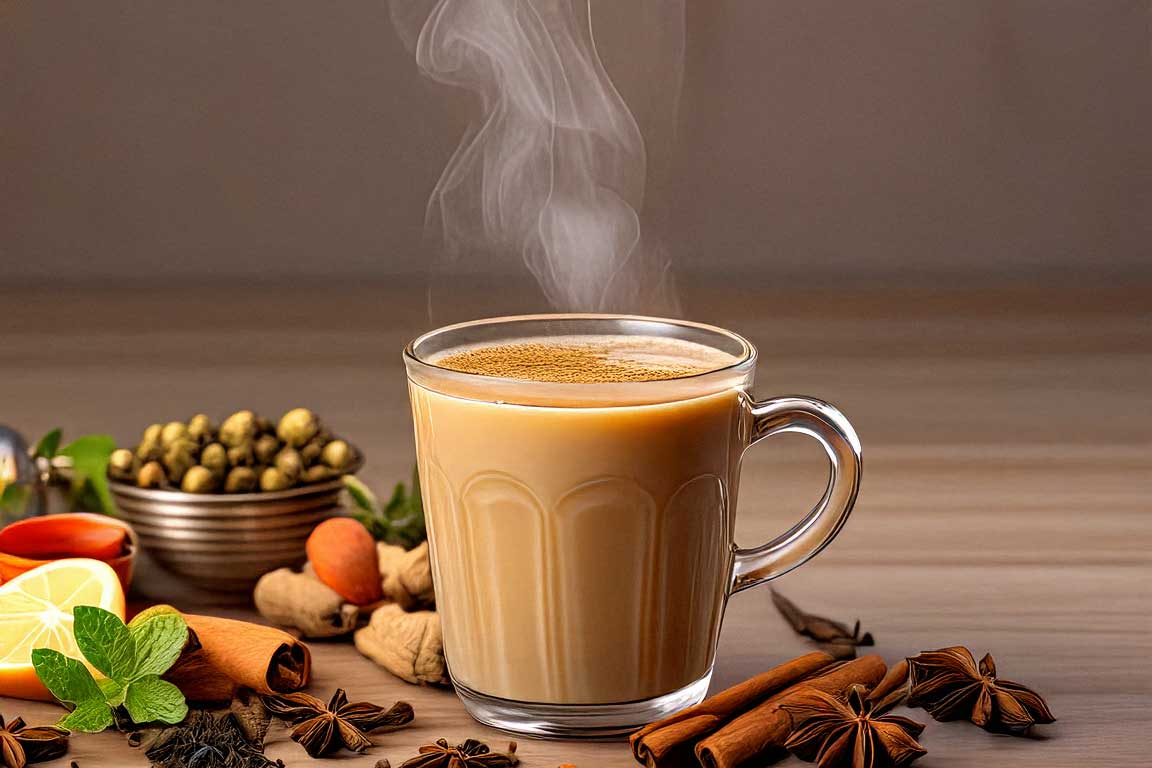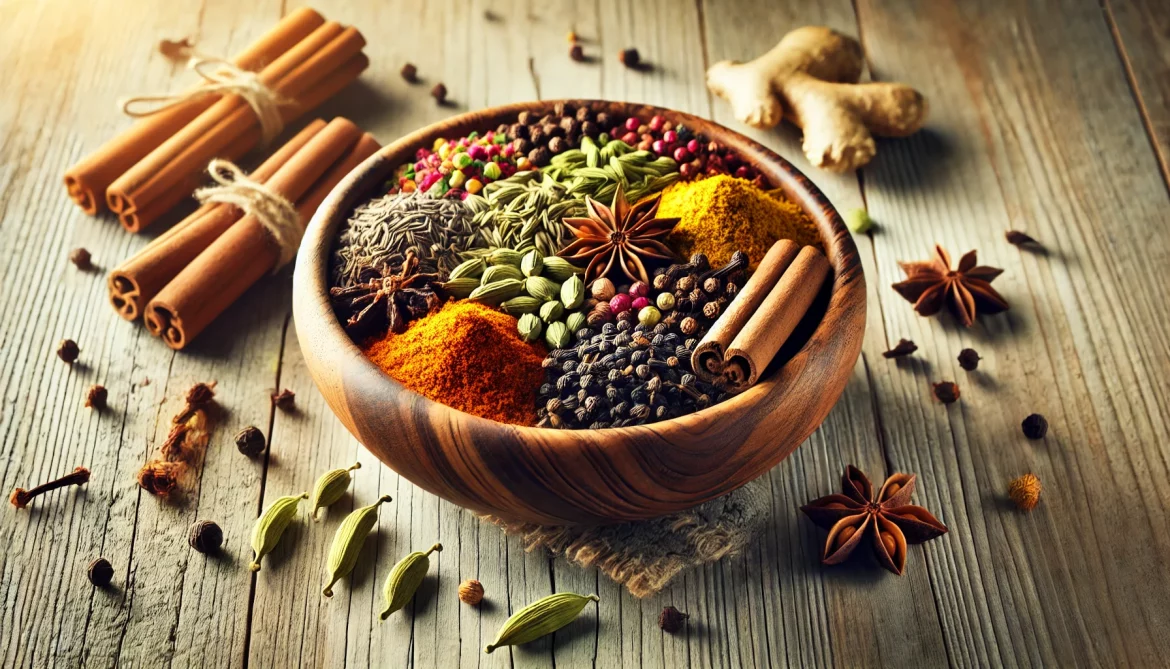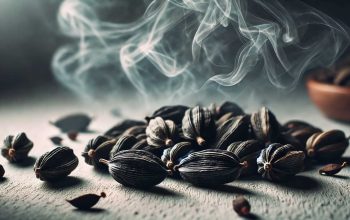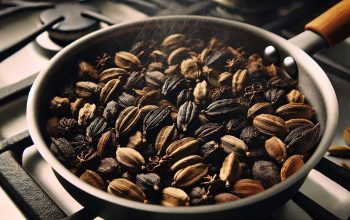Chai Masala is not merely a beverage; it’s an emblem of warmth, tradition, and togetherness. This spiced tea blend, originating in India, is a delightful concoction of strong black tea, creamy milk, sweetener, and aromatic spices. It has grown from its humble beginnings into a global phenomenon, cherished for its comforting flavor and cultural significance.
This blog explores the history of Chai Masala, delves into the nuances of its ingredients, highlights its cultural importance, and examines how it has inspired culinary innovations worldwide. We’ll also provide a guide to preparing authentic Chai Masala at home and uncover its numerous health benefits.
The Rich History of Chai Masala
The journey of Chai Masala spans centuries and cultures, combining elements of ancient Indian traditions and colonial influence.
Ayurvedic Origins: India’s love affair with spices dates back to the time of Ayurveda, the traditional system of medicine. Spices such as ginger, cardamom, and cinnamon were used not only for their flavor but also for their medicinal properties. These spices were often infused in water or milk to create healthful drinks.
The Arrival of Tea in India: Tea, originally discovered in China, came to India in the 19th century through British colonization. The British East India Company introduced large-scale tea cultivation in Assam and Darjeeling, aiming to reduce dependence on Chinese tea imports.
While the British promoted tea consumption, Indians began to innovate, blending tea leaves with local spices, milk, and sugar. This adaptation gave rise to masala chai—a beverage that married British tea culture with Indian flavors.
Chai Masala Ingredients: The Perfect Symphony
Each cup of Chai Masala is a blend of carefully selected ingredients that work in harmony to create its unique flavor profile.
The Essentials:
- Black Tea: Assam tea is preferred for its bold, malty flavor.
- Milk: Adds creaminess, with whole milk being the traditional choice.
- Sweetener: Sugar is common, but jaggery or honey adds a deeper sweetness.
- Spices: The core of Chai Masala, these spices create its signature taste:
- Cardamom: Sweet and floral.
- Ginger: Spicy and warming.
- Cinnamon: Woody and sweet.
- Cloves: Pungent and sharp.
- Black Pepper: Adds subtle heat.
Regional Variations: Different parts of India have their own takes on Chai Masala. In Gujarat, it may include nutmeg, while in Kashmir, saffron is often added for a luxurious touch.
The Cultural Significance of Chai Masala
Chai Masala is deeply embedded in Indian culture, serving as both a daily ritual and a symbol of hospitality.
A Drink for All Occasions: Chai Masala is consumed at all times of the day—morning, afternoon, or evening. It’s a staple in Indian households, where it is offered to guests as a gesture of warmth and welcome.
The Chaiwala Culture: Street-side tea stalls, or “chaiwalas,” are iconic in India. These vendors serve tea in small clay cups, often accompanied by snacks like samosas or biscuits. Chaiwalas are community hubs where people gather to chat, debate, and relax.
Making Authentic Chai Masala
Ingredients:
- 2 cups water
- 1 cup milk
- 2 teaspoons loose black tea leaves
- 1–2 tablespoons sugar
- 1 teaspoon Chai Masala spice mix
Method:
- Boil water with the spice mix to release the flavors.
- Add tea leaves and simmer for 2–3 minutes.
- Stir in milk and sugar, then bring the mixture to a gentle boil.
- Strain into cups and serve immediately.

Health Benefits of Chai Masala
- Improved Digestion: Ginger and cardamom aid digestion.
- Boosted Immunity: Antioxidants in tea and spices strengthen the immune system.
- Inflammation Relief: Cinnamon and cloves have anti-inflammatory properties.
- Balanced Energy: The caffeine in tea provides a steady energy boost.
Chai Masala Around the World
Chai Masala has inspired a global wave of innovation, with chai-flavored lattes, desserts, and cocktails appearing in cafes and restaurants worldwide.
Western Adaptations:
- Chai Latte: A frothy, sweetened version of traditional masala chai.
- Chai-Spiced Treats: Cakes, cookies, and ice creams infused with chai flavors.
Creative Twists: Some modern recipes incorporate vanilla, chocolate, or almond milk, adding a contemporary flair to this timeless classic.
FAQs About Chai Masala
- What is the difference between chai and masala chai? “Chai” simply means tea, while “masala chai” refers to spiced tea.
- Can I make Chai Masala without caffeine? Yes, you can use decaffeinated black tea or herbal teas like rooibos as a base.
- What is the best sweetener for Chai Masala? Sugar is traditional, but jaggery or honey can add unique flavors.
- Are there vegan options for Chai Masala? Yes, plant-based milks like almond, soy, or oat milk work well.
- How do I store Chai Masala spice mix? Keep it in an airtight container in a cool, dry place for up to six months.
- What snacks pair well with Chai Masala? Biscuits, pakoras, or samosas are popular accompaniments.
- Can Chai Masala be served cold? Absolutely! Chai Masala can be turned into iced chai for a refreshing summer drink.
- Why does Chai Masala taste different at cafes? Cafes often use pre-made syrups or powders, which differ from traditional homemade blends.
- Is Chai Masala healthy for everyone? Yes, but those with sensitivities to caffeine or specific spices should consume it in moderation.
- How can I experiment with Chai Masala flavors? Try adding saffron, vanilla, or nutmeg for a personalized twist.
Conclusion: Chai Masala embodies Indian culture, offering a rich blend of history, flavor, and hospitality. Its global appeal ensures its timelessness in every sip.



